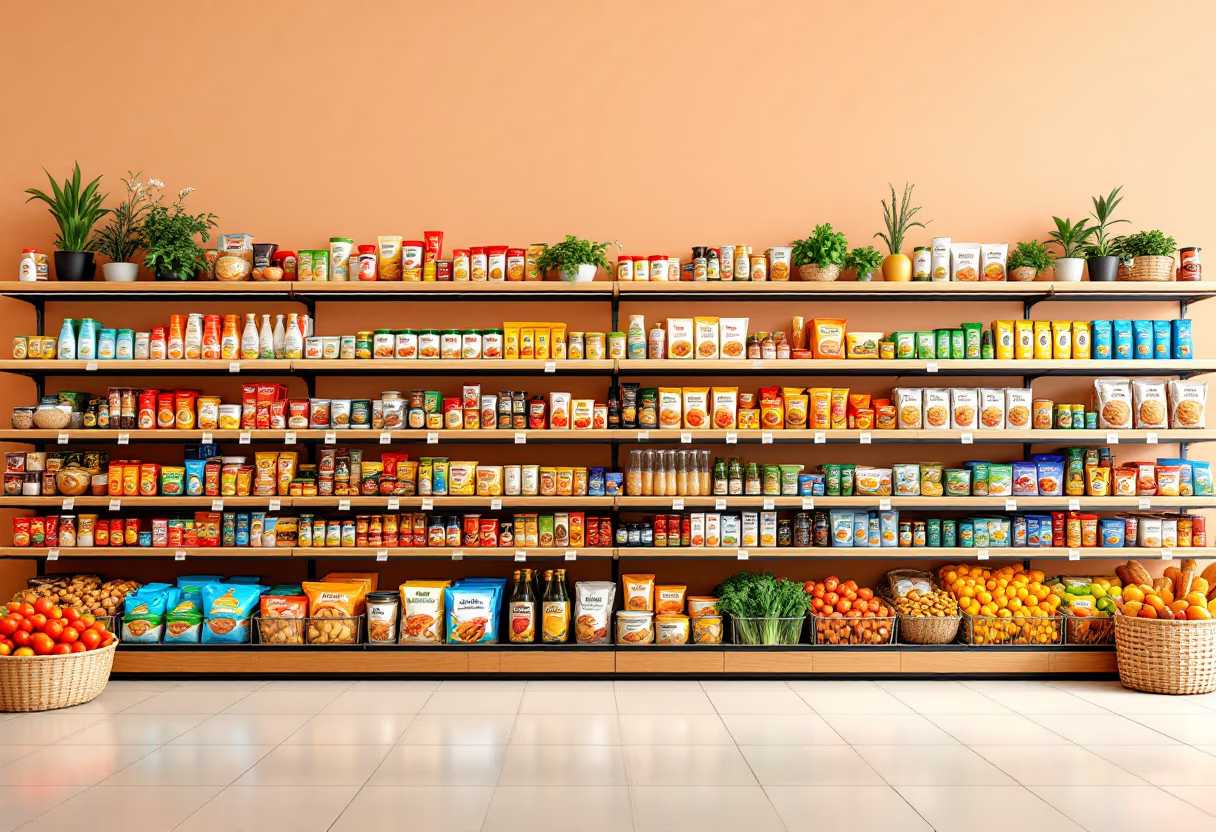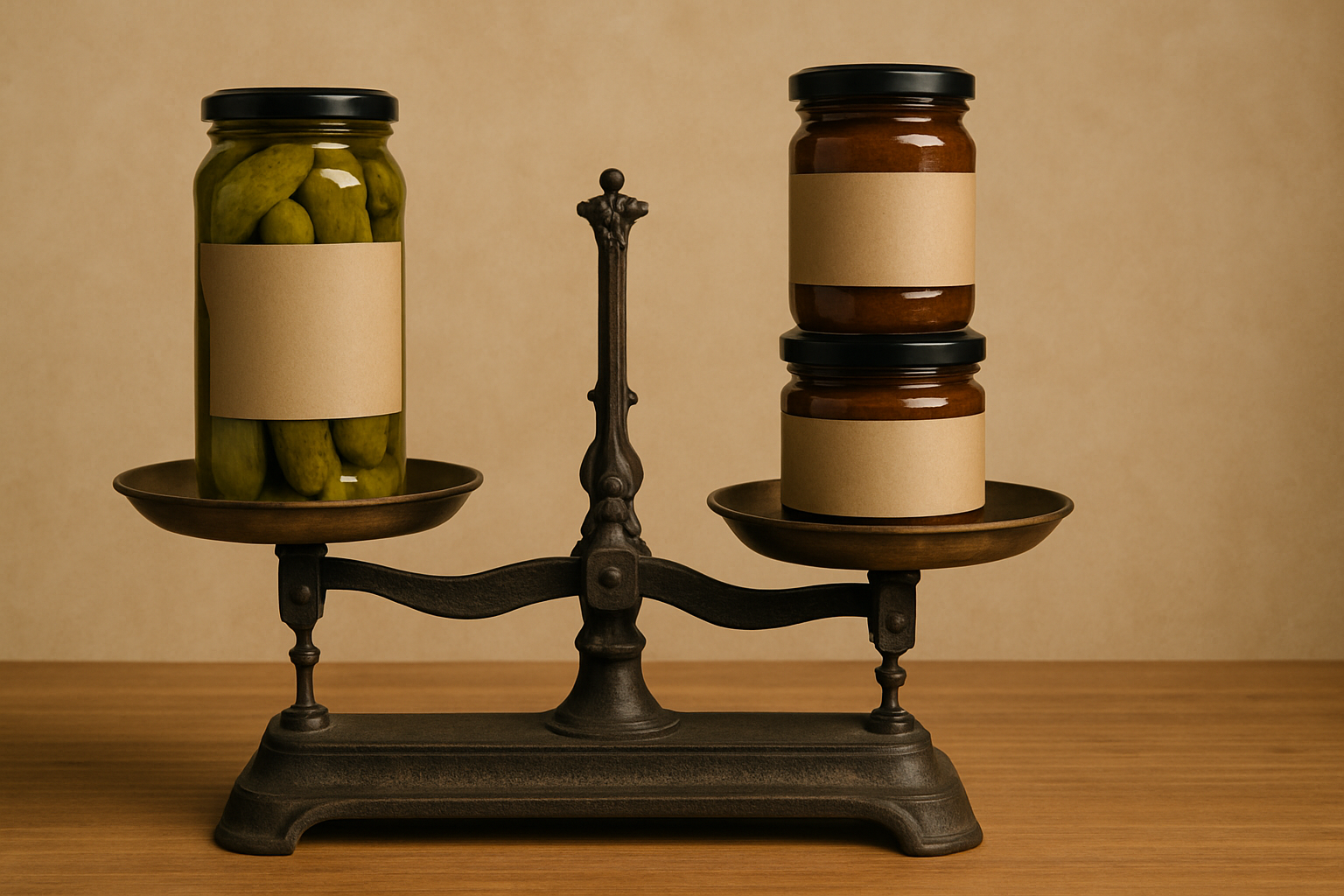How to Price Your Specialty Food Product: A Step-by-Step Guide
Launching a specialty food brand is exciting—your recipe is dialed in, your packaging looks great, and customers are starting to notice. But there’s one factor that will determine whether your business thrives or struggles: pricing.
Price too low, and you’ll never make enough margin to cover costs or grow. Price too high, and retailers won’t carry you—or shoppers won’t take the leap to try. Finding the “sweet spot” isn’t just about numbers, it’s about strategy.
This guide walks you step by step through the process of pricing your specialty food product, from calculating your true cost of goods (COGS) to understanding wholesale vs retail margins, distributor cuts, and retail realities. Whether you’re selling hot sauce, cookies, kombucha, or chocolate bars, these principles apply.
Why Pricing Matters in Specialty Foods
Pricing isn’t just math—it’s brand positioning. Your price tells buyers, retailers, and consumers what kind of product you are:
- Premium (organic, artisanal, small-batch)
- Everyday affordable (family-size, repeat purchase)
- Impulse treat (snackable, indulgent)
The price must align with your brand story, but it also has to survive the brutal math of distribution. Specialty food margins are often tighter than new founders realize. By getting pricing right early, you protect yourself from margin erosion as you scale.
Step 1: Know Your COGS (Cost of Goods Sold)
Your COGS is the foundation of all pricing decisions. It includes everything it takes to produce one sellable unit. Break it down into categories:
Packaging Costs
- Container, bag, or bottle
- Lid or closure
- Label(s) (front, back, compliance)
- Secondary packaging (box, carton, inserts)
Ingredients / Raw Materials
- Core ingredients (flour, sugar, chocolate, spices, etc.)
- Minor inclusions (salt, stabilizers, preservatives, flavorings)
- Specialty items (organic or fair-trade premiums)
Labor Per Unit
- Production time (mixing, baking, bottling, labeling)
- Packaging time
- Overhead labor (cleaning, setup)
Miscellaneous Costs
- Co-packer fees (if applicable)
- Freight in (cost to get ingredients delivered)
- Waste & shrink (broken jars, mislabels, spillage)
👉 Pro tip: Use a spreadsheet or calculator that allows you to input these categories separately. At GoodsRep, we recommend breaking packaging and raw materials into line items so nothing slips through the cracks.
Step 2: Calculate Your Unit Cost
Add up all your COGS categories, then divide by the number of sellable units. For example:
- Packaging: $0.35
- Ingredients: $0.25
- Labor: $0.10
- Misc: $0.02
Total COGS = $0.72 per unit
This is your baseline. Every pricing decision builds from here.
Step 3: Understand Distributor and Wholesale Margins
Most specialty food products don’t go straight from you to the grocery shelf. They pass through one or two middlemen—each taking their cut.
Distributor Markup
Distributors typically apply 25–35% margins (sometimes more for refrigerated or frozen). In practice, this means they buy your product at one price and sell it to retailers for 25–50% more.
- Example: If your COGS is $0.72 and you sell to a distributor at $0.90, they might resell it to the store at $1.35.
Wholesale Markup
Retailers buying direct from you (no distributor) will still expect 40–50% gross margin. That means if your wholesale price is $1.00, they’ll sell it on the shelf for around $1.67.
Retail Markup
Retailers set the final price based on their category expectations. Grocery margins typically run 35–50%, but premium specialty stores may accept higher retails if the product has strong positioning.
👉 Rule of thumb: Work backwards. If you know the retail price target for your category (say, $4.99 for a 4oz granola), calculate backwards through distributor and wholesale cuts to see what you can realistically charge.
Step 4: Build a Margin Waterfall
A margin waterfall helps visualize how money flows from your COGS to final retail. Here’s a simplified version using our $0.72 COGS example:
Now you can see the ripple effect: if your retail target is $4.99 but your current math only gets you to $1.80, something needs adjusting.
Step 5: Set Your SRP (Suggested Retail Price)
Your SRP (suggested retail price) is what you want consumers to pay on the shelf. This number should balance:
- Category norms (look at competitors’ pricing in Whole Foods, Sprouts, regional grocers, etc.)
- Perceived value (premium packaging and organic claims can justify higher prices)
- Profitability (ensure you have margin left even after promotions, slotting fees, and distributor cuts)
Example: If competing granolas sell at $4.99–$5.99, setting your SRP at $5.49 may give you room while signaling “premium but accessible.”
Step 6: Don’t Forget Promotions & Trade Spend
Your everyday margins aren’t your real margins. Why? Because promotions, discounts, and trade spend eat into them.
- Introductory discounts (10–15% off to retailers)
- Buy-One-Get-One offers
- Slotting fees (payment to secure shelf space)
- Free fills (giving the first case free)
👉 Plan for 10–20% of gross sales to go back into trade spend. If you don’t build this into your pricing, you’ll be underwater fast.
Step 7: Revisit and Adjust
Pricing is not “set it and forget it.” Ingredient costs fluctuate. Packaging suppliers raise rates. Distributors renegotiate terms. You need to revisit pricing at least once a year, if not quarterly.
- Track ingredient cost trends (cocoa, vanilla, nuts, grains are volatile).
- Monitor category pricing (did your competitors move up?).
- Assess velocity vs margin (is selling more at a slightly lower margin better?).
Common Pricing Mistakes to Avoid
- Underpricing to get on the shelf. Retailers love low prices, but if you can’t sustain margins, you’ll crash later.
- Ignoring distributor cuts. Selling direct at farmers’ markets doesn’t prepare you for national distribution math.
- Not accounting for promotions. The first trade spend bill is a wake-up call.
- Setting price by “gut feel.” Always anchor in data and COGS math.
- Not scaling packaging costs. Small runs have higher per-unit packaging; factor in volume pricing as you grow.
Case Study: The $7 Hot Sauce
Let’s walk through an example.
- COGS (ingredients + packaging + labor): $2.10
- You sell to distributor at $3.00
- Distributor sells to retailer at $4.50
- Retailer sells at $6.99
At first glance, you’re making $0.90 per bottle ($3.00 – $2.10). But after trade spend (15% of $3.00 = $0.45), your net is only $0.45. Suddenly your “great margin” doesn’t look so hot. Without proper planning, this is where many specialty brands stall out.
Tools to Help You Price Smarter
- GoodsRep Pricing Calculator – Break down packaging, raw materials, labor, and instantly see distributor/retail pricing scenarios.
- Airtable or Google Sheets templates – Easy to update ingredient costs.
- Industry data sources – SPINS, Nielsen, or even grocery store audits to benchmark category SRPs.
When to Raise Prices
Every founder dreads raising prices. But sometimes it’s necessary:
- Ingredient costs increase dramatically (e.g., cocoa in chocolate).
- You’re positioned as too cheap compared to competitors.
- You want to introduce a larger format or premium line.
👉 Communicate increases clearly to retailers. Tie them to ingredient or freight costs rather than margin expansion.
Wholesale vs DTC (Direct-to-Consumer) Pricing
Selling direct (via your website or farmers’ market) is attractive because you capture retail margin. But beware:
- Consumers expect shipping included or cheap.
- DTC requires marketing spend to drive traffic.
- DTC prices should still align with retail (don’t undercut your own SRP).
Best practice: Keep SRP consistent across channels, but consider DTC bundles or subscription discounts.
Building a Long-Term Pricing Strategy
Think beyond today’s jar of jam or bag of chips. A strong pricing strategy supports:
- Scaling to distribution (UNFI, KeHE, regional DSDs)
- Launching line extensions (premium SKUs, larger packs)
- Retailer negotiations (margin expectations, promotions, slotting)
- Investor conversations (gross margin health is a key metric)
Final Thoughts
Pricing your specialty food product is both science and art. It requires detailed math (COGS, margin waterfalls, trade spend) but also a keen eye on brand positioning and consumer psychology. By starting with a solid foundation—and revisiting often—you set yourself up for long-term success.
At GoodsRep, we specialize in helping emerging food brands nail their pricing, margins, and retail strategies. If you’re wrestling with these numbers or planning your next stage of growth, we’d love to talk.



